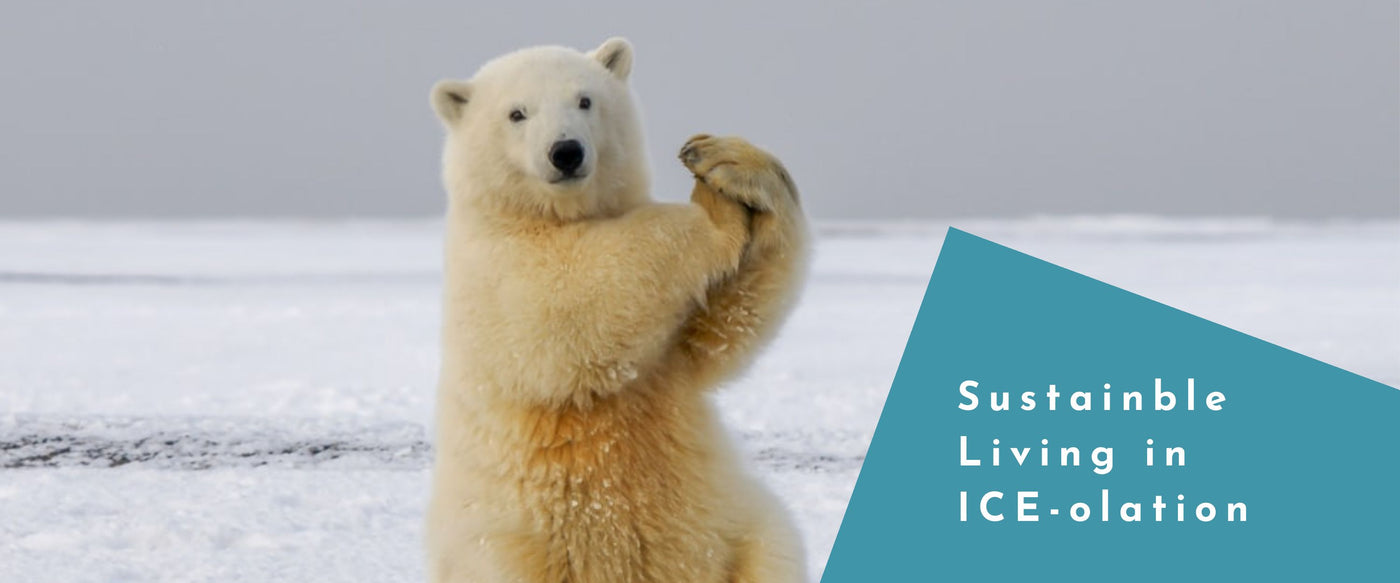
We know how much our Norte community shares our love for the environment and our commitment to Leave It Better, for People, Places and Planet. We also appreciate how many of our Australian, and particularly Victorian friends, are limited in their access to the outdoors right now. With more time tucked away in our homes, we’ve invited the incredibly talented Nina Bendon as our guest blogger this week.

Nina hails from the Surf Coast and is a regarded community development activator, marketing and communications specialist and uniquely talented green-thumb and DIY-er. In this week’s blog, Nina talks to us about her best tips for sustainable home living, changing habits and the polar bear effect. Enjoy the read and keep safe friends!
Norte Team xx
-----
With the latest travel restrictions in place, some of us are itching to reconnect with our favourite adventure spots, after all, connecting with nature (amongst many other benefits) nourishes our soul and boosts our mood.
It’s a great time to get creative and think about different ways to connect, and if we can’t do it physically, turn our daily thoughts to nature by upping-the-anti on some new sustainable living habits.
Sustainable living encourages us to start acting like stewards, as individuals, businesses, industries, and entire communities, to protect the future of this beautiful planet.
So if our favourite places aren’t enough to motivate us to change some habits.... how about doing it for a polar bear while we’re in ICE-olation??
Have I lost you yet…….? Bear with me. ;-)

Everyone loves a big fluffy ‘white’ polar bear… right?
For a Polar Bear, home really is, ALL about the Ice Ice Baby! (respect, Sir V. Ice). These awesome creatures live, hunt, breed, and travel on ice.
You may have heard about the ice caps in the Northern Hemisphere forming later in the year and breaking up earlier, or the thinning of Arctic sea ice?
According to National Geographic, scientists believe that a build-up of greenhouse gases in the atmosphere, from human activity (in particular the burning of fossil fuels), have influenced this unmistakable upward warming trend and subsequent melting of the polar bears icy habitat.
There are lots of different strategies, actions and lifestyle tweaks that together, can help to reduce our individual ecological footprint (including our carbon footprint) and conserve earth’s natural resources for future generations. After all, there is no planet B.
Practicing sustainable living is very much a personal interpretation and should fit into your lifestyle. Here are some of the things I have personally found the easiest to implement and might help you on your way!

75% of all food that is sent to landfill comes from our households. Rotting food in landfill produces methane, which is around 24 times more potent than carbon dioxide as a greenhouse gas.
34% of Australia’s total greenhouse gas emissions in 2019 were produced by fuel electricity emissions. Switching to renewable energy like solar power is ideal, yet making small changes to your habits will have a cumulative effect too.

According to Clean Up Australia, a circular economy is an alternative to a traditional linear economy (make, use, dispose), where all materials are treated as precious resources, with nothing thrown away.
In 2019, Transport accounted for 19% of Australia’s greenhouse gas emissions and our personal vehicles are the biggest contributor to this figure.
These are some small changes we can all incrementally make in our day-to-day lives and we’d love to hear about your tips and ideas on how we can all contribute to a more icy home for our beloved Polar Bears.

You can read more about Norte's commitment to Leave It Better, for People, Places and Planet, here.
And check out our range of eco-friendly and cruelty free products, here.
